UNESCO Sites
- Home
- Discovering Iran
- Attraction
- UNESCO Sites
How many UNESCO World Heritage Sites are there in Iran?
24 UNESCO World Heritage Sites in Iran
1. Choqa Zanbil Ziggurat
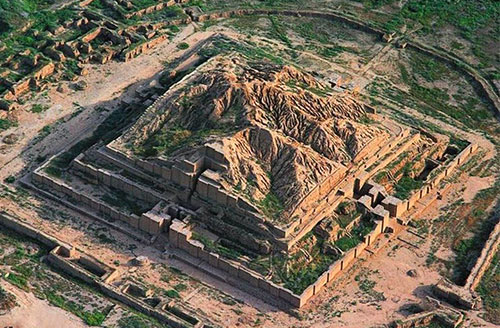
In Persian, called /choqa zanbil /
To get an idea of the Iraq Bible’s Tower, travel to Choqa Zanbil. Choqa Zanbil Ziggurat, or Dur-Untash, as one of the best-preserved mudbrick ziggurats globally, is in Susa (shush) Khouzestan Province. This stepped Ziggurat’s history as the ancient world’s masterpiece dates to 1250 BC (about 3300 years ago), Elamite Period.
Thousand Bricks,
to Meet with Elamite God
The five-floor Ziggurat with 52 meters high, was founded to honor the great god Inshushinak by the great king of Elam, Untash-Napirisha. Elamites believed that by reaching the top of the Ziggurat, they would be closer to their gods. So, they built this Ziggurat high enough to get the sky and protect the Ziggurat from flooding. But Choqa Zanbil Ziggurat was destroyed during the war between Elamite and Assyrian by the Assyrian king, Ashurbanipal. As written in an inscription: “I broke the ziggurat of Susa, which has glazed bricks, I destroyed the temples of Elam, I turned Susa into the ruin, so the sound of happiness hear from there.” The city was never completed, and this jewelry was hidden under the ground until Roman Grishman’s discovery. Today, there are just two and a half floors of this ancient monument 25 meters high (half its original size).
2. Naqsh-e Jahan Square
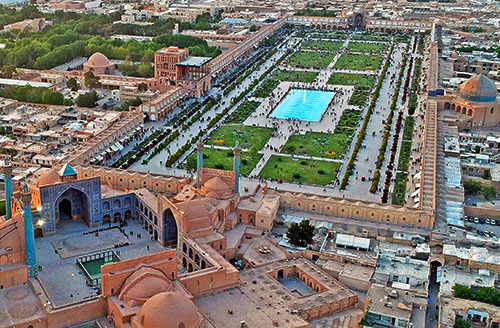
In Persian, called /Meidan-e naqsh-e jahan / or /meidan-e shah/ or /meidan-e emam/
If a time machine could take you anywhere for one day, choose Naqsh-e Jahan (image of the world) Square in the heart of the city of turquoise domes. As you step into Shah Square (king’s Square), you will find yourself in the middle of an old historical movie. An immense Square like a big city with horses on the move, an army parade, royal monuments, and musicians are holding a public concert above the balcony. When you walk to Naqsh-e Jahan Square, you will see all previous Iran’s dynasties. Chardin, a famous French traveler, wrote that over 50,000 lights are on wooden bases around the magnificent buildings. You cannot see such illumination all around the world.
Naqsh-e Jahan Square is in the center of Esfahan, the cultural capital of Iran. Nasir Khusraw, a prominent Iranian philosopher and traveler, travel to Esfahan in 444 AH. He said: I saw no beautiful city like Esfahan in Persian-speaking areas (present-day Iran). Over 50 caravansaries stood in the Ko-Taraz Alley. And streams passed through the Esfahan’s alleys. King’s Square has 14 main entrances and 14 Subsidiary entrances for people to enter and exit quickly in games and celebrations (which is similar to Rome’s Colosseum).
3. Persepolis
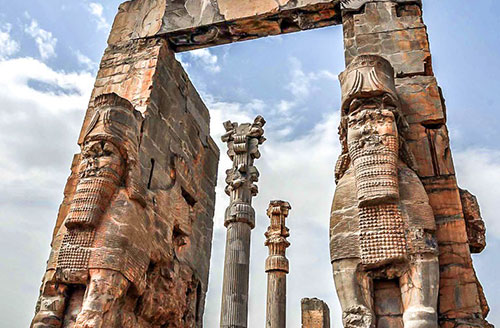
In Persian, called /takht-e jamshid/
Persepolis, the ceremonial capital of the Achaemenid Empire in 125,000 square meters, was built by Darius I in the City of Parseh (Persia), 518 B.C. Later, this immense complex was completed (add parts) by his son Xerxes I and his grandson Artaxerxes I. Today, you walk in Persepolis by seven years’ history (from the 4th millennium B.C. to the Safavid Era), while some monuments are under your feet!
The construction of Persepolis never ended.
The Architecture of Persepolis
The Achaemenid artistic styles were inspired by the arts of Assyria, Babylon, and Egypt. But Persepolis head columns and platform-terrace (Sofe) building are unique. Since Persepolis’s terrace was the holy place, people entered without their horses. Persepolis or Takht-e Jamshid had three outer walls: the first wall was 7 meters in height, the second was 14 meters, and the third was 27 meters. The greatness of Persepolis was due to its high walls. Unfortunately, the walls were removed in the first scientific excavations in Persepolis.
4. Takht-e Soleyman
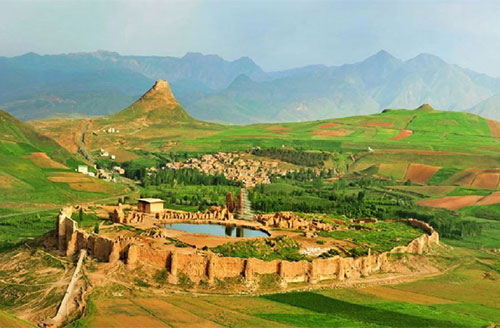
d
d
d
d
d
d
d
5. Bam and its Cultural Landscape
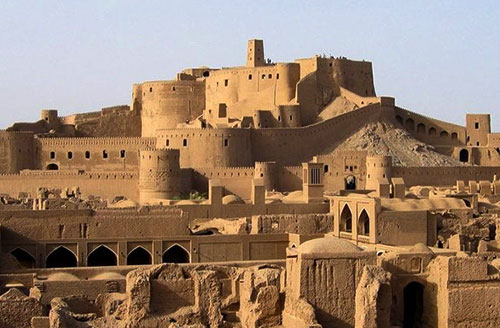
m
m
m
m
m
m
m
m
6. Soltaniyeh

d
d
d
d
d
d
d
7. Bisotun
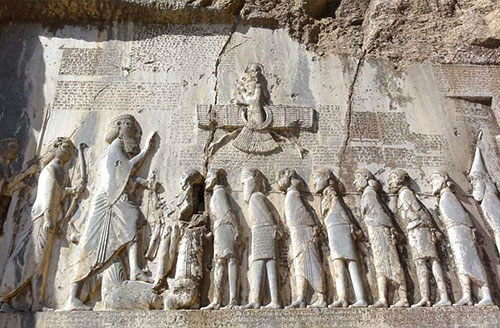
m
m
m
m
m
m
m
m
8. Pasargadae
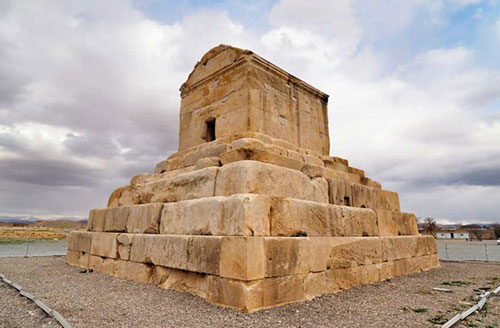
In Persian, called /pasargad/
The archeological site of Pasargadae, the first capital of the Achaemenid Empire, was built by Cyrus II the Great after his victory over Astyages, the last king of the Median Empire, in 546 BC. Pasargadae means the homeland of the Persian or the camp of Persia, in the Morqab Plain, Fars Province.
Dashte Morqab: the plain of Pasargadae
The architecture of this big city was inspired by Elam, Egypt, Babylon, and Assyria, as the first outstanding sample of the royal Achaemenid’s evolution of the art, architecture, and Persian civilization. The architecture’s colors consist of black and white stones. The ancestors also call the village the mother of Solomon (God prophet), Pasargad. Historically, they believed that Shiraz (Fars Province) is the kingdom of Solomon. What we know about Pasargadae today is from the excavations’ documents and written travelogues.
9. Armenian Monastic Ensembles of Iran

m
m
m
m
m
m
m
m
10. Shushtar Historical Hydraulic System

d
d
d
d
d
d
d
d
11. Tabriz Historic Bazaar Complex
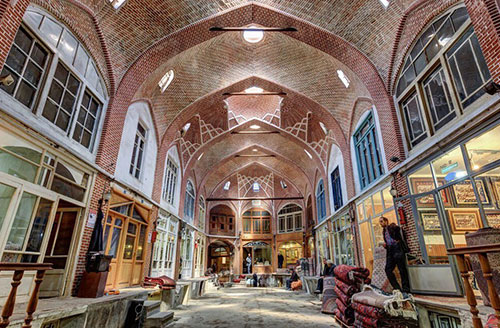
m
m
m
m
m
m
m
m
12. Sheikh Safi al-din Khānegāh and Shrine Ensemble
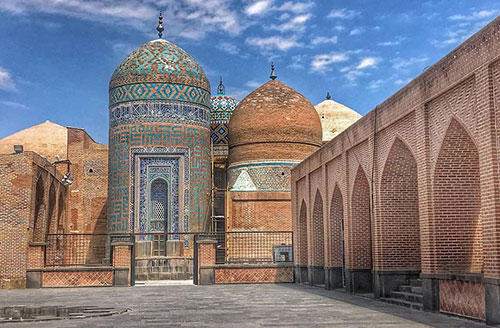
d
d
d
d
d
d
d
d
13. The Persian Garden

m
m
m
m
m
m
m
m
14. Gonbad-e Qābus
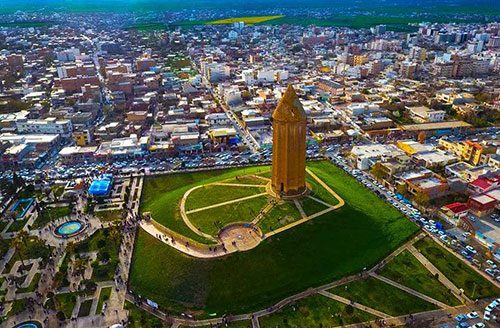
d
d
d
d
d
d
d
d
15. Jāmé Mosque of Isfahan
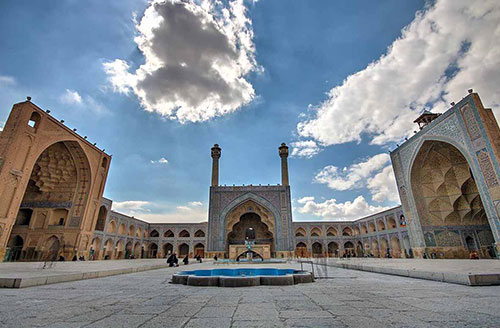
In Persian, called /masjed jam-e isfahan/
Jame Mosque of Esfahan, also known as Atiq Mosque and Masjed Jameh Isfahan, is the oldest Friday (congregational) mosque in the heart of Iran, Esfahan. As the twelve centuries’ veritable museum, the history of Jame Mosque is not related to a single period. It covers Sassanid, Abbasid, Buyid, Seljuq, Ilkhanid, Muzzafarid, Timurid, and Safavid Periods. So, the mosque’s structure combines architecture in different periods. Masjed Jame Isfahan, as the biggest mosque in Iran (covering over 20,000 square meters), shows the importance of Esfahan City for over 1400 decades, as the Pre-Islamic era. The grand mosque had political, religious, and learning aspects. Rituals held, Khutba (Sermon) read and said, who is the Amir al-Muminin (the leader). Many great men, such as Ibn Sina, taught in the Jameh Mosque of Isfahan.
Converting the Forty-Column Arabic Mosque into a Four-Iwan Iranian Mosque
The primary monument of the mosque was built by the Bani Tamim tribe on a Jewish Hill (Jo-bare Region) near Historic Bazaar in the 8th century AD, as a columnar Arabic mosque. Because of finding Sassanid remains under the dome of Taj Al-Mulk, the construction activity on this site is believed back to Sassanid Fire Temple.
16. Golestan Palace
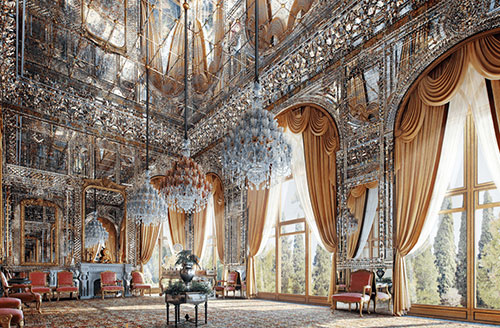
d
d
d
d
d
d
d
d
17. Shahr-i Sokhta
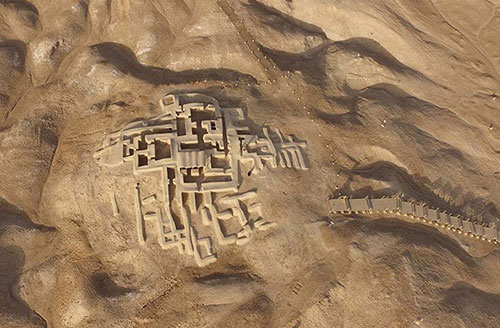
m
m
m
m
m
m
m
m
18. Susa
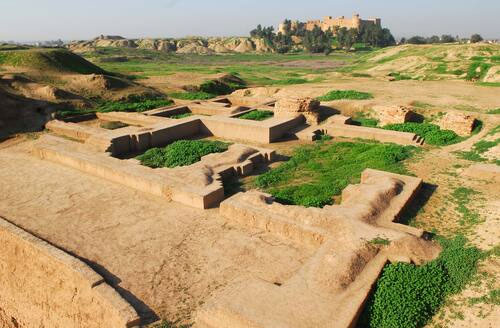
d
d
d
d
d
d
d
d
19. Cultural Landscape of Maymand
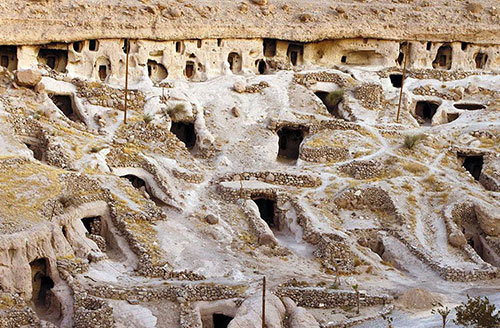
m
m
m
m
m
m
m
m
20. Lut Desert
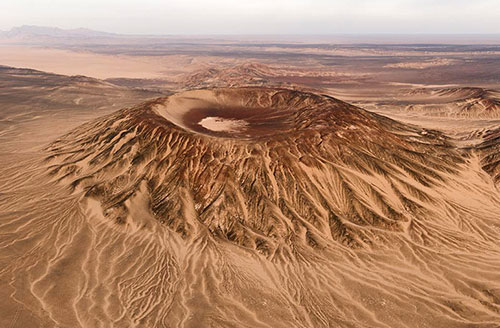
d
d
d
d
d
d
d
d
21. The Persian Qanat

In Persian, called /qanat/ or /kariz/
Most Iran cities have a hot and arid climate, formed based on water supply in response to the harsh weather by providing water systems inside the arid deserts. In the early part of the first millennium BC, Iranians constructed underground water horizontal tunnels on deserts with no water resources for extracting groundwater, called Qanat (in Persian called Kariz). The total length of Iran’s Qanat (about over 37,000 identified qanats) is 350,000 kilometers, approximately equal to the distance between the earth and the moon and 43 times more than the length of the China wall. In 2016, UNESCO inscribed 11 active qanats in Khorasan, Yazd, Markazi, Isfahan, and Kerman provinces with some innovations. Nowadays, these active resources are used for agricultural purposes and local usages.
Qasabeh Qanat, the oldest and deepest qanat in the world
Qasabeh Qanat, known as Kariz-e Kei Khosrow or Gonabad Qanat, is in Khorasan-e Razavi Province, dates to 3-4 centuries BCE. The stepped qanat was built in 33 kilometers, and its mother well is 300m deep. The main water source of Qasabeh Qanat is Siyah-Kuh Mountains.
The oldest water clock is situated
in Gonabad, Khorasan-e Razavi Province.
22. Historic City of Yazd
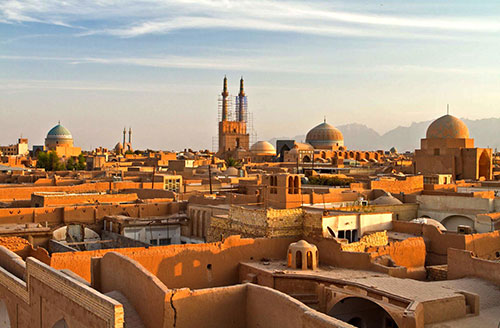
In Persian, called /Yazd/
The historic city of Yazd located in the heart of Iran deserts, between the Dasht-e Kavir and the Dasht-e Lut, Esfahan and Kerman, and close the Spice and Silk Roads in Yazd Province. Yazd, as an ancient city, dates to the Achaemenid era. The adobe city has a hot and arid climate. Yazd city formed based on water supply in response to the harsh weather by providing Kariz (Qanat), Abanbar (water cistern), mud-brick houses, Kah-Geli (mud and straw plaster) walls, Badgir (wind catcher), Yakhdan (space for storing ice), traditional Yakhchalas, goudal-baqcheh (kind of garden), sabats (type of roof), gozar, and caravansarais.
Amirchaqmaq Complex, Dolat Abad Garden, Alexander’s Prison, Zoroastrian Fire Temple, Gor-dakhme or Zoroastrian Towers of Silence, Jameh Mosque, traditional houses like Khan-e Lari, Grand Bazar, Qanats, Yazd Water Museum, Saheb A Zaman Zurkhaneh, Mirror and Lighting Museum, clock tower, historical alleys, caravansary, Yazd bathhouses, caves, and Yazd Deserts are Yazd attractions.
Yazd, as the city of windcatchers, is also known for its intangible cultural heritages. Ten percent of Yazd people follow the ancient religion of Zoroastrianism with Zoroastrian language, and others are Muslims who speak Farsi in Yazdi Dialect. The art of Yazd’s people is to transform desert restrictions into life possibilities.
23. Sassanid Archaeological Landscape
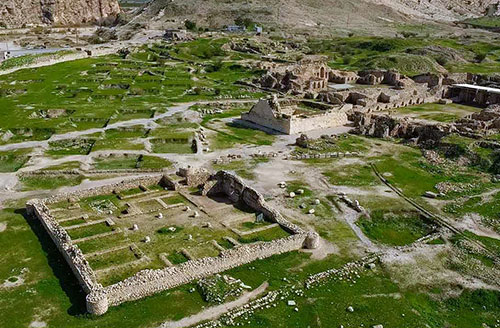
Fars province is a treasure chest of palaces, fortifications, and reliefs from the Sassanid period. In 2018, UNESCO registered eight archeological sites of this great treasure in Firoozabad, Bishapur, and Sarvestan:
Dokhtar Castle, The Oldest Domed building in the World
In Persian, called /qal-e dokhtar/
Qaleh Dokhtar (Dokhtar means girl), as a 71-hectare fortress built by Ardashir in a strategic location on three levels, dates back to 1800 years ago. Qaleh Dokhtar was created as a stronghold to protect the Sassanid capital against the Parthian King. This fortress includes a monumental palace with Chahar-Taq domes (dome on a square space), auxiliary structures, open spaces, and outer fortification walls.
The entrance hall on the lower access level, vaulted halls with an intermediate terrace, and private rooms on the uppermost level are made this stone castle. Copper coins of Yazdegerd III, the last Great King of Sassanian Empire, have been excavated in the inner fortress’ walls. The castle is in mountains of Firoozabad, Fars Province.
24. Hyrcanian Forests

In Persian, called /jan-gal-haye shomal/
Watching movies is the only way we can see dinosaurs. But we are going for a few hours’ drive to the forests that are as old as the dinosaurs.
Hyrcanian forests,
the remnants of an Ice Age
The forests of northern Iran are the oldest dense forests in the world, known as the Hyrcanian. Hyrcania was the old name of Gorgan in the Mazani dialect, which was also known as Varkana. Hyrcanian Forests stretch 850 km along the Caspian Sea’s bottom like a green ribbon and cover northern provinces like Mazandaran, Gillan, Gorgan, and Golestan. As the remnants of an Ice Age, the history of these green forests dates back 25 to 50 million years. The favourable climate of Hyrcanian Forests helps to survive these living fossil forests for millions of years and be home to many living creatures, including unique plants, trees, birds, and animals.

